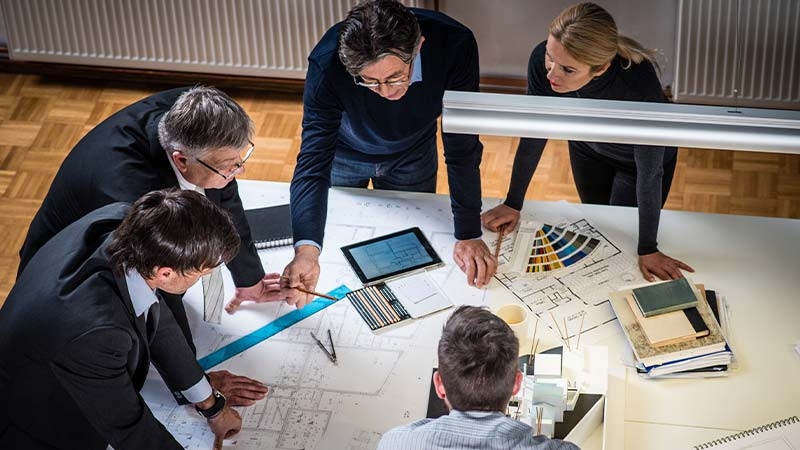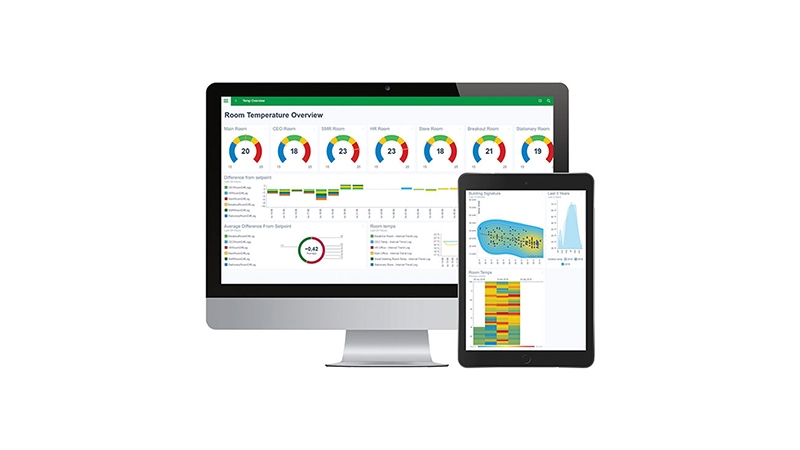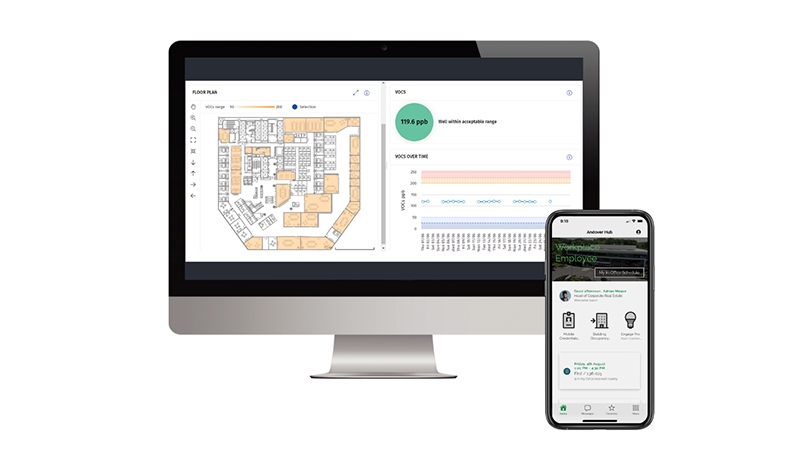
Several factors can affect the health of buildings and their occupants: air quality, temperature and humidity, volatile organic compounds (VOCs), occupancy levels, and more.
Investing in healthy buildings can result in higher employee productivity and reduced health insurance costs. It also helps earn certifications like WELL, Fitwell, and RESET.
Learn how to make buildings healthier, safer, and more responsive in our guide.
The benefits of healthy buildings
57% of employees said working in an office negatively impacted their health1
92% of occupants prefer wellness-enabled/capable buildings2
29% increase in work quality and decreased levels of absenteeism3
Explore our resources for creating healthy buildings

Ensuring occupant health in three steps
Discover a three-step approach to improve a buildings' health using data from existing sensors.
Read the white paper
Reducing infectious disease risks in buildings
Learn how building management systems help identify infectious disease transmission and reduce its spread.
Read the white paper
Improving indoor air quality with room sensors
Learn how connected smart room sensors can improve efficiency, health, and comfort.
Read the white paper
Healthy buildings playbook
Discover four key areas to meet the new demands of the returning workforce in a post-pandemic environment.
Discover our solutions for healthy buildings

Building management system
Create healthier, comfortable, and more sustainable buildings with our smart building management system.
Discover EcoStruxure™ Building Operation
Building services
Simplify your building maintenance with a suite of analytic monitoring services so you can remotely and proactively manage your buildings.
Discover EcoStruxure Building Advisor
Room control
Modernize your BMS to deliver more to your occupants. Personalize their experiences with greater levels of room control.
Discover modern room control
Software and apps
Planon Workplace and EcoStruxure Engage Enterprise are innovative digital tools that empower building managers and occupants with insights and information for smart offices.
Discover our smart office solutions
Stay informed on healthy building trends
Read the latest articles from our experts in healthy buildings for more information and insights to make your buildings future-ready.
Sources
1 NEXT Energy Technologies, Inc. 2021. “The Case for Office Space: How Buildings Need to Change to Suit a Climate-Conscious, COVID-Weary Workforce”
2 Joseph Allen, 2021. "Employers Have Been Offering the Wrong Office Amenities", The Atlantic
3 Gallup, 2018. "Designing Your Organization's Employee Experience"
1. What are healthy buildings?
Healthy buildings are designed to prioritize the well-being, safety, and overall experience of occupants, promoting their well-being and productivity. A healthy building ensures the building is secure for occupants and their personal assets. This includes controlling access, monitoring safety with CCTV, and installing fire protection systems. They also provide an inspiring environment that attracts and retains occupants. This involves creating spaces that people want to use, offering interaction with the environment, balancing natural and artificial lighting, reducing excessive noise, and enabling services and communications for occupants. Lastly, a healthy indoor space is provided by focusing on the air quality and overall environment to positively impact the well-being of occupants. This includes avoiding harmful elements, detecting and mitigating chemicals, odors, contaminants, and toxins, maintaining high-quality ventilation, preventing dampness and mold, and monitoring water systems.
2. Why healthy buildings are so important?
Healthy buildings are important because they prioritize the well-being, safety, and comfort of occupants. By incorporating features such as safety measures, inspiring environments, and a healthy indoor environment, they create a people-centric space that enhances occupant experience and productivity. Safety and security measures provide a sense of safety and protect occupants and their personal assets. Comfort and experience features create a space that people want to use, with balanced lighting, reduced noise, and services and communications for occupants. A healthy indoor environment ensures that the building does not harm occupants, detects and mitigates harmful elements, maintains good ventilation, prevents dampness and mold, and monitors water systems. Ultimately, healthy buildings promote the overall well-being and productivity of occupants.






